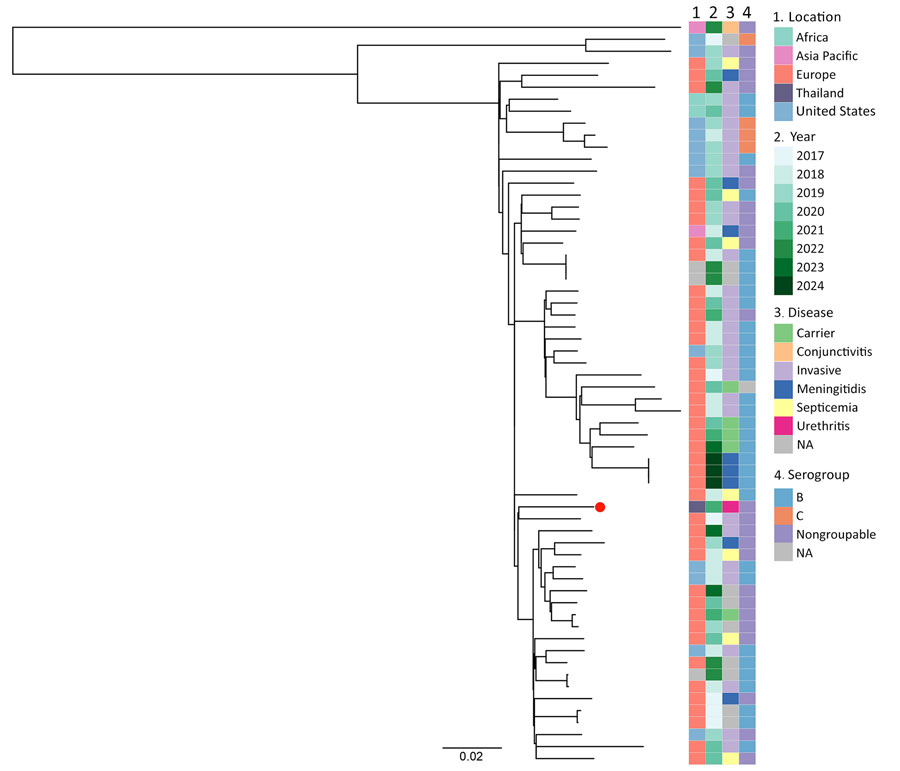Volume 31, Number 10—October 2025
Dispatch
Antimicrobial-Resistant Clonal Complex 11 Neisseria meningitidis–Associated Urethritis Cluster, Thailand
Figure 2

Figure 2. Maximum-likelihood phylogenetic tree of clonal complex 35 Neisseria meningitidis isolates used in investigation of antimicrobial-resistant clonal complex 11 N. meningitidis–associated urethritis cluster, Thailand. The tree is based on 65 core-genome single-nucleotide polymorphisms of isolates collected from multiple disease types. Red dot indicates the single N. meningitidis–associated urethritis isolate (NM4) from this study. Scale bar indicates nucleotide substitutions per site. NA, not available.
1These first authors contributed equally to this article.
2Current affiliation: Faculty of Medicine Siriraj Hospital, Mahidol University, Bangkok, Thailand.
Page created: August 19, 2025
Page updated: September 25, 2025
Page reviewed: September 25, 2025
The conclusions, findings, and opinions expressed by authors contributing to this journal do not necessarily reflect the official position of the U.S. Department of Health and Human Services, the Public Health Service, the Centers for Disease Control and Prevention, or the authors' affiliated institutions. Use of trade names is for identification only and does not imply endorsement by any of the groups named above.